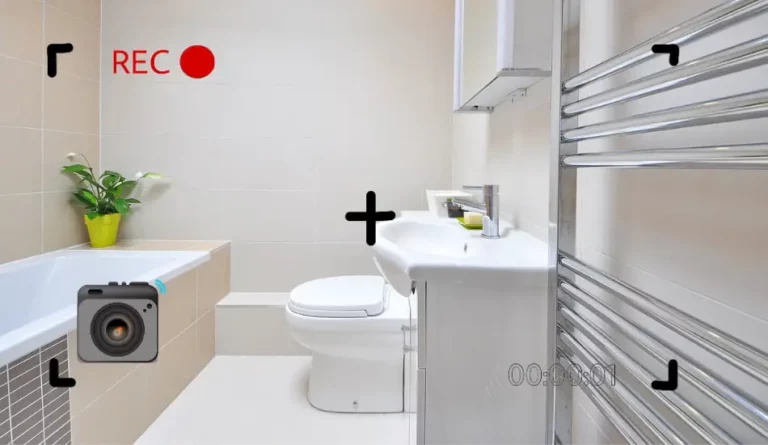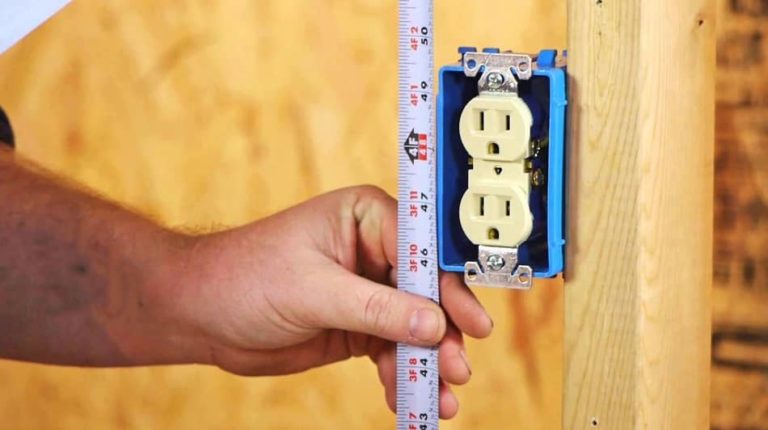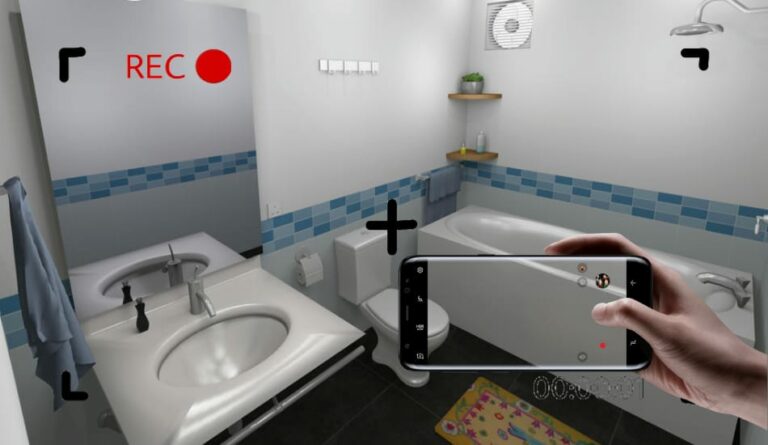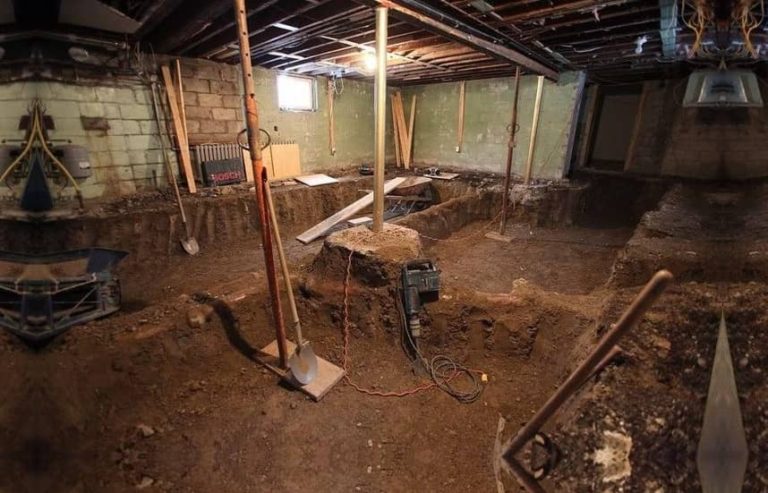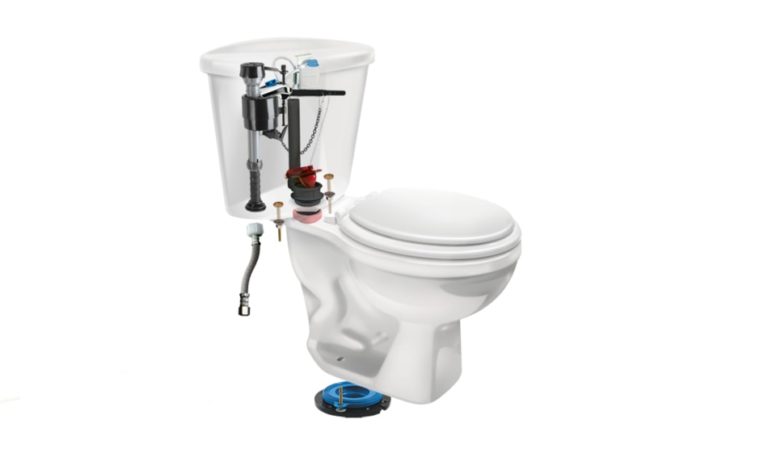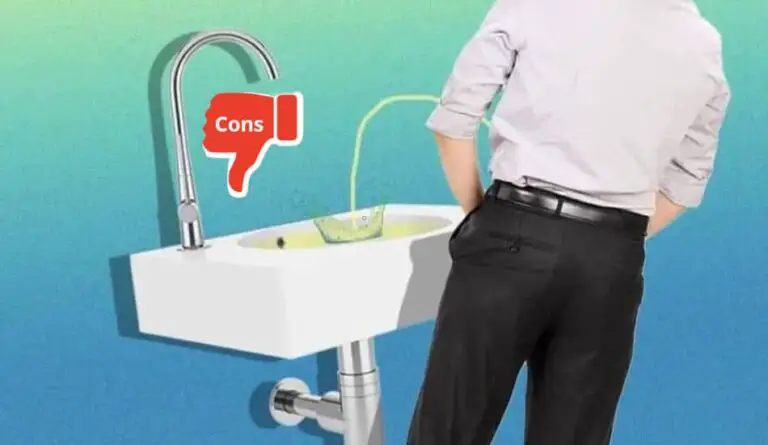How a Bathtub Works? | Plumbing & Drain System
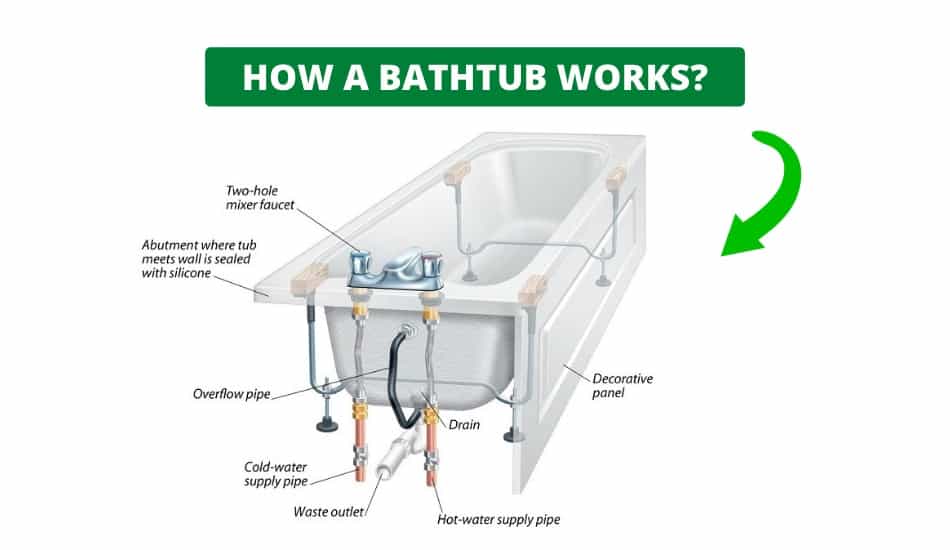
Each of us has at least one bathtub in a house. Although we use them every day, do we know the principle of how bathtubs actually work? I talked to a couple of my friends and I was surprised that they didn’t know how the water supply is actually connected to a bathtub and where the water goes after we take a bath.
Table of Contents
How a Bathtub Works?
How a Bathtub Works? The bathtub works in a way that the water comes to the tub through the faucet and exits through the drain. Each bathtub consists of two main parts; the water supply lines and the drain. The valve is connected to water (hot or cold) supply lines, while the drain is connected to the home’s drain line.
Basic Parts of a Bathtub
Here are all the parts that a bathtub have:
- Cold-water supply pipe
- Hot-water supply pipe
- Tub faucet
- Drain
- Overflow pipe
- Flexible connector
- Waste outlet
- Rim
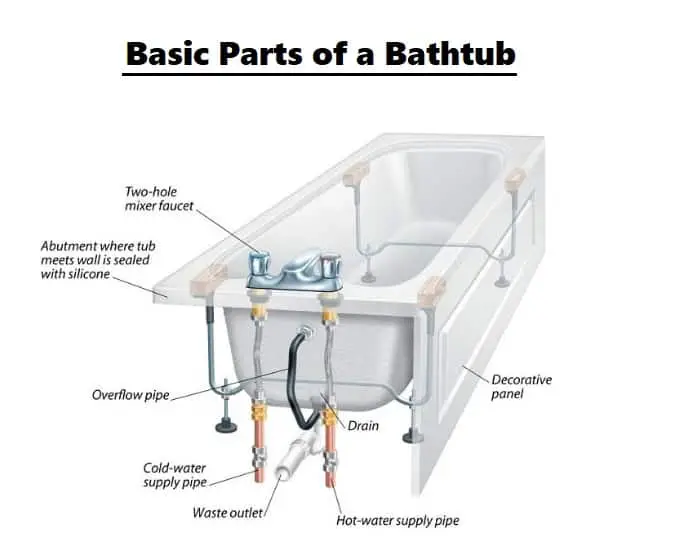
If you want to buy bathtub parts, you can find them here on Amazon.
Do All Bathtubs Work Same?
All bathtubs are designed to work on the same principle, and for them to work properly, they must have water supply lines and a drain system. There are different types of bathtub drains (6 common types), but their role is the same.
However, there are various models of bathtubs, such as whirlpool and air tubs, which have a built-in pump, where the air is forced through small holes and it serves to create an allover bubbling massage. These models of bathtubs require electricity to drive the pumps.
What if My Bathtub Doesn’t Work?
If you find yourself in a situation where your bathtub is not working, you must first find out the problem. Is the water supply working properly? Is the water leaking from your bathtub, or do you have the problem with your bathtub drain system? Once you have diagnosed the problem, It is desirable to seek professional help from a plumber.
Also, be sure to check How to Fix a Hole in a Bathtub, article that I wrote, if you have this problem.
What Are the Most Common Bathtub Problems?
Now that we have explained to you how a bathtub works, you also need to know what are the most common problems that can occur with each bathtub.
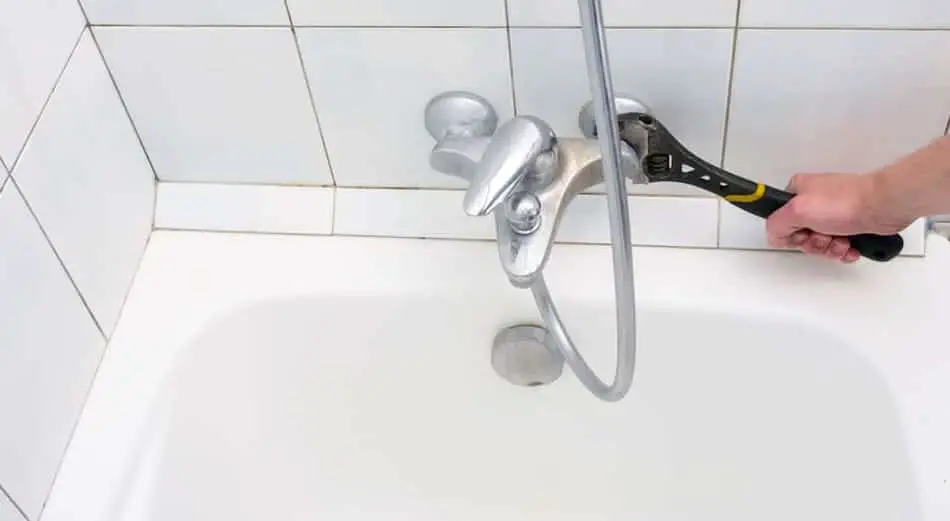
- Tub Faucet Leak
If this problem is not resolved in time, you may be faced with large water bills. This problem is very easy to solve, and you don’t need to worry too much. Although sometimes it can be a little harder to identify where the leak is coming from, because you have a few different types of pipes in the bathroom.
- Low Water Pressure
This problem most often occurs when it comes to shower head. You can check this by running cold water and see if the pressure increases. This allows you to determine if the problem is in the shower head or in the pipes that block the water flow.
- Slow Draining
If you have a problem with slow draining, the problem is most likely in the clogged pipes. During the shower, we happen to shave, and over time the hairs from our body get sucked into the tube and lead to clogging. This problem is usually solved using different chemicals.
- Cracks in the Bathtub
After a while on some bathtubs, cracks can appear which causes the leaking. But keep in mind that some cracks can be so small that you can’t even notice them with your eye. Therefore, you need to inspect each part of the bathtub in detail to find where the crack is located, and thus stopped the water from leaking.
Bathtub Plumbing Diagrams
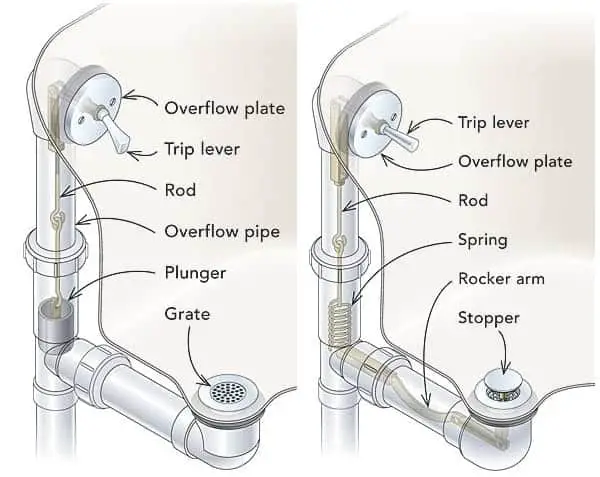
How a Bathtub Drain Works?
Bathtubs can come in combination with two drains. The bathtub drain is located at the bottom of the tub, at the drain hole, in the middle, or at one end. The main role of the Bathtub drain is to let water out of the tub. Screwed to the siphon, it provides the link between the latter and the bathtub.
It can be closed, allowing the tub to be used as a shower or a bath. Most often, the plug is closed by a shutter embedded in the overflow and connected to the plug by a cable.
But it is quite possible to prefer a simple stopper or a pop-up system to be operated with the foot. Drain and shutter participate in the aesthetics of the bathtub.
Two different assemblies of the drain are most commonly used: plunger-type and pop-up.
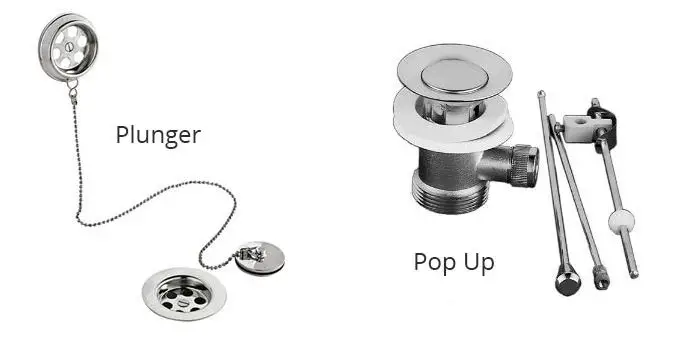
The plunger works on the principle that you just insert it into the hole and seal the drain opening. The pop-up drain works on the push principle. With the press of your feet, it goes up or down. When the drain stopper is up, the water can flows into it.
How Does an Overflow Drain on a Bathtub Work?
In the bathtub, the overflow serves as protection to stop water when it reaches a certain level and it is located a few centimeters from the edge of the tub. The anti-overflow device is in most cases a hole that, more or less is hidden and that is connected by a flexible pipe to the upper part of the drain.
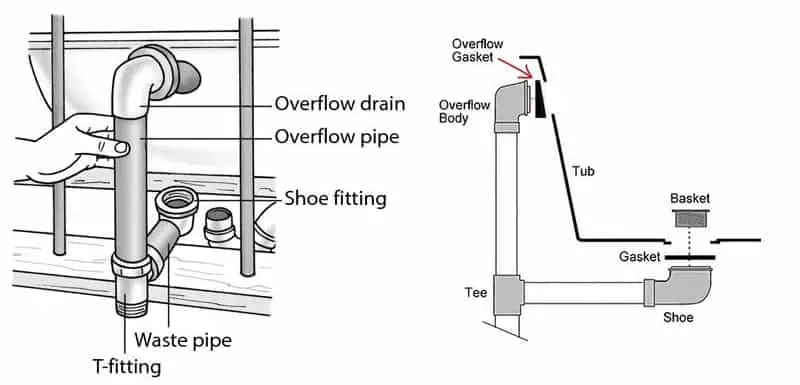
As necessary as the overflow is, some freestanding bathtubs are not equipped with it. It’s a question of aesthetics. Keep in mind that an anti-overflow safety device is most often set at the level of the emptying plug: so that the plug does not close and the water can be evacuated; or it incorporates the overflow system, which then operates with the weight of the water (bathtub).
How Bathtubs Are Made?
There are different types of bathtubs: the built-in bathtub, free-standing bathtubs, whirlpool tubs, and shower baths. When it comes to shapes; All bathtub shapes are suitable for recessed installation: rectangular, square, round, oval, asymmetrical, etc. The dimensions of the built-in bathtub depend on the chosen shape. Choose your bathtub according to the size of your bathroom. Most common bathtub types:
- Cast Iron
It is the traditional material of the bathtub par excellence. Solid easy to maintain, cast iron is also a very insulating material. But its main fault is its heavy weight. It must not be placed on a ground that cannot support it. It is less and less manufactured and available in very few forms.
- Enamelled Steel
It is both lighter and more affordable than cast iron but also easier to maintain. It is very resistant to impact and scratches. Be careful, the bath water cools faster in an enameled steel tub, because this material retains heat less well.
- Acrylic
It is the most commonly used material today. Lightweight, excellent value for money and it come in all sizes and shapes. Acrylic is non-slip and perfectly retains the heat of the water. It is soft to the touch but has a fragility to scratches, it must therefore be maintained with non-abrasive products.
Final Thoughts
While every bathtub is designed and it is working on the same principle, you should know that there are different types of bathtubs that come with additional things, such as whirlpool and air tubs. These tubs use different pumps in combination with electricity to create air bubbles.
Now that you know the basic principles and how a bathtub works, you can easily spot and diagnose the problem if it happens to you. So you will be able to at least assess whether you can solve the problem yourself or if you need to call a master.


